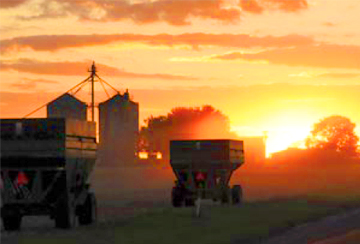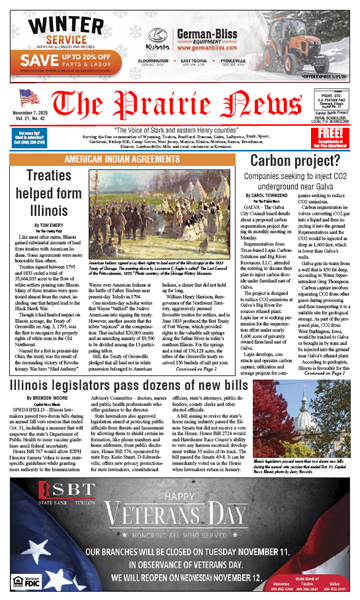
By JEFF LAMPE
For The Weekly Post
Harvest is going very well across central Illinois.
Dry conditions and mature crops have many farmers well ahead of the normal pace. Yields have so far been generally good, with most of the state’s corn and soybean crop rated good or excellent.
But as is often the case in agriculture, there’s always something to foul up a perfect fall. This year that something is low commodity prices, with typical per-bushel cash payments on Tuesday around $3.90 for corn and $9.85 for soybeans delivered to an elevator.
That’s a far cry from the $7 per bushel of corn back in 2022. But while prices for commodities have dropped in the past two years, the same is not true for inputs such as fertilizer, seed and chemicals.
“The price of inputs is up and the price of the crop is low,” Tom Shissler of Elmwood said Tuesday while combining beans in Mason County. “You’ve got about four bucks in the crop in corn (per bushel) and right at $10 in beans. If you’re cash renting, you’ve got all of that in it. If you own the ground, it’s a little different.”
That combination has farmers lamenting what shapes up as a difficult year despite a strong crop that should be out of the field in a timely manner – unless storage problems arise.
“That’s farming. We just take what they give us,” said Dick Johnson of Brimfield. “I don’t worry about it until I get a check in the mail when I’m done.”
Through Sept. 29, Illinois farmers had harvested 21% of the corn crop, well ahead of the five-year average of 16%. Soybean harvest was further ahead of schedule, with 24% of beans in the bin vs. the five-year average of 11%.
All that is despite a bumper crop that has bins filling fast. Yields of 80 bushels of beans per acre are not uncommon in the area, and the U.S. Department of Agriculture has predicted an average soybean yield of 65 bushels per acre.
Similarly, the USDA-predicted corn yield of 222 bushels per acre is something many producers are already surpassing.
Shissler has completed soybean harvest in Knox and Peoria counties and is now focusing on Mason County with his son Adam. In all three locations, yields have been very good.
“This is on pretty light sand here (in Mason County) and they are running mid-70s,” Shissler said. “Now these beans were all planted in April. Whether the later beans are as strong, I don’t know.”
Earlier this month while discussing the lack of rain since mid-August, Illinois State Climatologist Trent Ford told Successful Farming, “The late-planted stuff wasn’t quite at maturity when we had this dry spell hit, so it may have had some yield affected. It’s likely the best stuff is going to come out first, so we’ll see how yields change as we get deeper into the harvest season.”
Illinois is No. 1 producer of soybeans in the U.S. and the No. 2 producer of corn, behind only Iowa.







